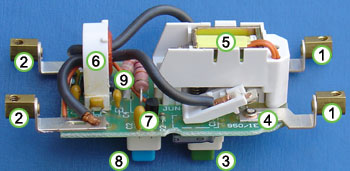I also thought the RCD worked on current, maybe some do, but to get enough energy from around 26 mA to open a latched set of contracts seems to be stretching it a bit, at 50 volt that is 1.3 watt so not impossible, but in the early days I did try using a standard RCD on a 110 volt supply and they did not trip with a test resistor.
In theory it is only the maximum voltage that matters, over 50 volt AC is low voltage so if the supply is over 50 volt it should work, same applies when proving dead, proving unit must test at 50 volt to show the tester can detect 50 volt, having 250 volt as well may show all lights work, but the important thing is tester shows if over 50 volt.
Since our standard 110 volt three phase supply is 64 volts to earth, and where I was working when doing tests our 110 volt was three phase, the RCD should have worked. However the RCD tester was designed for 230 volt, so could not use the standard RCD tester as it simply refused to work on 64 volt. I used a 1kΩ line 1 to earth which at 50 volt is 50 mA so should have tripped, but did not.
Today we can buy
110 volt RCD's but pre internet days, getting a 110 volt version was like getting that stuff which rocking horses don't make. But if a standard 230 volt RCD will work down to 50 volt, why make special 110 volt versions? Looked at
data sheet seems to be nothing as to why need a special 110 volt version.
I will guess there are some electronics in the RCD which do need voltage to work,
Wikipedia the sense circuitry 7 seems to have some electronics, I would assume these need a voltage to work.





